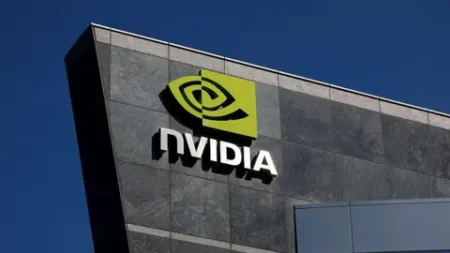Microsoft Corporation is on the verge of a monumental achievement, poised to surpass the impressive $4 trillion market valuation for the very first time on an upcoming Thursday. This extraordinary milestone comes on the heels of a robust earnings report that positions Microsoft as the second company to breach this remarkable threshold, following the trailblazer Nvidia. Nvidia first achieved this feat on July 9, solidifying its prominence in the tech industry, but Microsoft is now set to claim its place alongside this elite group.
The growth trajectory of Microsoft is buoyed by a forecast that anticipates a record $30 billion in capital expenditures for the first quarter of this fiscal year. This optimistic outlook is underpinned by substantial revenues generated from its Azure cloud computing segment, which has emerged as one of the company’s strongest performers. Following these announcements, Microsoft’s shares (stock ticker: MSFT) surged by 8% in premarket trading, effectively valuing the company at an astonishing $4.14 trillion in market capitalization. This figure is notably significant when considering that Microsoft first crossed the $1 trillion mark back in April 2019.
Unlike its tech counterparts, which have seen more explosive rises, Microsoft has taken a more measured approach in its path toward $3 trillion. Companies such as Nvidia and Apple have demonstrated their prowess in achieving significant valuations at a much quicker pace. For example, Nvidia saw its value triple within the span of just a year, placing it ahead of Microsoft. As of now, Apple stands at approximately $3.12 trillion, reflecting the competitive dynamics within the sector.
The broader tech landscape is currently influenced by significant developments in trade negotiations. Recent breakthroughs between the United States and its trading partners, particularly in light of the August 1 tariff deadline set by then-President Donald Trump, have invigorated stock markets, propelling indices like the S&P 500 and the Nasdaq to record heights. Microsoft’s valuation has also rebounded notably, nearly recovering 50% from its lows recorded in April 2025, when uncertainties surrounding Trump’s tariff strategies created turmoil in global markets.
A transformational aspect of Microsoft’s growth has been its strategic investment in artificial intelligence, particularly with its substantial backing of OpenAI. This partnership has not only bolstered Microsoft’s Office Suite but has also revolutionized their Azure cloud services, leading to a remarkable doubling of Microsoft’s stock value since the introduction of ChatGPT at the end of 2022. This focus on AI technology has enabled Microsoft to gain a competitive edge, providing it with exclusive access to OpenAI’s cutting-edge models.
As a result of these advancements, Microsoft’s Azure cloud business has surged to become the company’s primary revenue driver. This robust performance has reinforced Microsoft’s standing within the tech industry, significantly ahead of competitors like Google Cloud and Amazon Web Services.
The investment community’s increasing confidence in Microsoft is reflective of the tech powerhouse’s successful financial strategies. Following a streak of record revenues since September 2022, Wall Street has rallied behind the company. Moreover, the stock has experienced an additional uptick due to decision-making aimed at trimming the workforce while simultaneously amplifying investments in AI technology. This strategy demonstrates Microsoft’s commitment to preserving its leadership in a rapidly evolving technological landscape.
Despite initial trepidations surrounding potential declines in business spending as a result of sweeping U.S. tariffs, Microsoft’s recent stellar earnings signals that the company’s financial health remains robust. The remarkable resilience shown by Microsoft amid external pressures exemplifies the strategic choices made by leadership, showcasing the effectiveness of their investments and the forward-looking nature of their operations. Overall, as Microsoft inches closer to the $4 trillion mark, its evolution continues to captivate investors and analysts alike, heralding a new era of possibilities in the tech sector.











